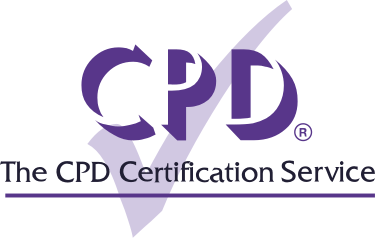Scientists work in a remarkably diverse array of industries. Companies employ them to develop and improve products, universities hire them to teach and do research, healthcare companies have them working on medications, vaccines, and new treatments, and governments employ a team of scientists to help with public projects.
For professional scientists, CPD is an excellent way of ensuring that people are keeping up with the latest scientific developments and techniques. We aim with this article to examine the different types of science CPD courses, Science Council and CPD IBMS requirements, as well as the five steps to perfect CPD.
What is CPD for Scientists?
Continuing Professional Development, or CPD, describes any activities undertaken in addition to on-the-job training, which contribute to a scientist’s personal or professional improvement and development. Making a commitment to regular CPD activities gives confidence to employers and the general public that scientists can not only perform their specific job roles, but are working to a high standard and contributing to the broader scientific community.
Almost any activity that develops a scientists valuable skills may qualify as CPD for scientists. Biomedical scientist CPD examples includes attending workshops, seminars and conferences, volunteering and mentoring, reading around a certain subject, and participating in CPD courses for biomedical scientists.
A balanced CPD portfolio should include a selection of activities in at least 3 of the following categories:
- Work-based
- Professional
- Formal
- Self-directed
- Other learning
Work-based learning
Work-based learning is any professional development that takes place within the work environment in a current role. Much of this development should occur naturally with experience as the responsibility and the complexity and scope of the work increases. Examples include:
- Internal training (beyond normal scope of role)
- Work shadowing or secondments
- Peer Review
- Supervising staff or students
- Discussions with colleagues
- Participation in departmental or inter-departmental meetings
- Preparation before commencing a new role or expanding an existing role
- Contributing to or leading the development of new standards or processes
- Involvement in wider, profession-related work of employment (for example, being a representative on a committee)
Professional
Professional CPD for science technicians and biomedical scientists includes activities that support development such as participating in activities that develop the professional skills and knowledge of other professionals, and demonstrating activities that apply scientific expertise for the benefit of the wider community. Examples include:
- Organising a conference, scientific meeting or technical visit
- Acting as an examiner or supervisor of research
- Participation in a technical interest group, panel or study group
- Taking part in workshops, focus groups and technical visits with other professionals
- Preparation for giving presentations or taking part in a debate at conferences or scientific meetings
- Networking with professionals in other organisations
- Coaching or mentoring
- Taking part in online discussions on matters of major scientific or technical interest
Formal
Formal training includes the participation in activities that lead to gaining academic/professional qualifications and attendance at structured learning activities organised by professional bodies, learned societies or training providers. Formal CPD for scientists includes:
- Attending CPD courses for biomedical scientists and technicians
- Attending conferences or scientific meetings
- Writing articles or papers for publication
- Undertaking distance learning or e-learning activities
- Undertaking a program of learning or research for an academic qualification
Self-directed learning
Self-directed CPD for Scientists describes a process in which individuals take the initiative, with or without the help of others, in diagnosing their learning needs, formulating own learning goals, identifying resources for learning, choosing and implementing appropriate learning strategies, and evaluating learning outcomes. Examples include:
- Reading journals or articles
- Reviewing books or articles
- Updating knowledge through the internet or TV
- Reflective practice - assessing benefit of CPD activities to self, client or employer and identifying the next steps
Science Council CPD requirements
The Science Council is a membership organisation made up of approximately 35 licensed professional bodies and societies across all science-based disciplines. These include: BCS, The Chartered Institute for IT, Association for Clinical Biochemistry and Laboratory Medicine, The Geological Society of London (GEOLSOC), Institute of Food Science and Technology (IFST.) Everyone on the Science Council CPD register must:
- Maintain a continuous, up-to-date and accurate record of their CPD activities
- Demonstrate that their CPD activities are a mixture of learning activities relevant to current or future practice
- Seek to ensure that their CPD has contributed to the quality of their practice
- Seek to ensure that their CPD benefits the users of the service (employee, customer, student etc)
- Present a written profile containing evidence of their CPD upon request
The Health and Care Professions Council
The Health and Care Professions Council is a statutory regulator of over 280,000 professionals from 15 health and care professions in the UK. In order to maintain HCPC registration, biomedical scientists must keep an up-to-date and accurate record of their CPD activities, demonstrate that activities are varied and relevant to current and future practice, explain how their CPD has contributed to their quality of practice and service delivery, and describe how their CPD benefits the service user. The HCPC may audit a registrant at any time and request a written profile of CPD work and evidence which demonstrates how they meet the profession’s CPD standards.
CPD IBMS - Institute of Biomedical Science
The Institute of Biomedical Science (IBMS) is the leading professional body for biomedical scientists, support staff and students. The CPD IBMS scheme provides an opportunity for biomedical scientists to recognise their members’ continuing professional development through the award of CPD Diplomas. In order to gain a CPD IBMS Diploma, scientists will need to complete 24 activities across three categories. These activities must have taken place within 2 years of the date submitted for validation and have reflection on those activities. Biomedical scientist CPD examples include a mix of learning types and science CPD courses.
The CPD scheme is now entirely electronic. This means that the recording, amending and validating of CPD are all carried out online.
What are the five steps to perfect CPD?
- Plan
- Do
- Record
- Reflect
- Submit
CPD Step 1 - Plan
The first step is to create a plan of action to achieve individual goals. Planning any CPD starts by making an honest assessment of the current situation and determining professional development goals for both the present and the medium term e.g. in the next 2 to 3 years. It is for the individual to recognise their own needs and opportunities inside and outside the workplace - because the needs of each individual will vary, there is no one fits all programme. It is useful to ask the following questions:
- What do you want to learn?
- How will you apply it in practice?
- Does this flag up any additional development which would be helpful for you to undertake?
- What benefits will it have for your clients and/or your service?
- How does this help you prepare for a new role?
CPD Step 2 - Do
Once a CPD plan is written, it is time to get out there and start developing. Although attending activities requires time management skills and strong motivation, it offers valuable benefits as it keeps scientists connected to the wider community and improves networking skills. Biomedical scientist CPD examples and activities should include a mix of work-based, professional, formal, and self-directed learning.
CPD Step 3 - Record
It is expected that the individual maintain continuous, up-to date and accurate records which demonstrate a mixture of Science CPD Courses and other learning activities. Monitor and record progress against a Personal Development Plan (PDP). Professionals who regularly record CPD are better at reflecting on what they have learned are those who tend to continuously drive for development and bring in new ideas to benefit colleagues, their company and the industry overall.
Tip: Remember that CPD for science technicians is about quality of the learning rather than quantity of the activities performed. CPD recording should be output focused (what are benefits of learning) rather than input focused (list of dates and actions). Be mindful when considering an activity which is part of a normal working day routine as in most instances this will not qualify as CPD development.
CPD Step 4 - Reflect
Reflection is the most important part of perfect CPD for science technicians and biomedical scientists since it helps to determine the value of work for colleagues, clients, company and the wider scientific community. If reflection is missing, then CPD for scientists becomes less effective as a means of improvement. Remember it is important to remember and reflect while 'on the go', as it is easier to remember the key moments which often result in improvements and changes to current practices.
CPD Step 5 - Submit
If part of a CPD scheme, be prepared to send CPD reports or certificates of CPD courses for biomedical scientists in time for annual assessment. Individuals may be contacted by their professional body or employer when it is time to review their CPD.
What is a Certificate of Attendance?
A Certificate of Attendance can be used to demonstrate a members' Continuing Professional Development. A CPD Certificate of Attendance is an official document used to prove that a person has been to any conference or seminar relevant to their specific job role in order to claim the CPD points/hours or credits for his or her participation.
In some cases, a CPD certificate is used to enable someone to be assessed as suitable to be awarded a particular qualification, in others, it is used to allow the recipient of a particular qualification to show that they are continuing to meet the CPD conditions set. From time to time members of a relevant professional body or institute could ask to provide a Certificates of Attendance as evidence of CPD courses for biomedical scientists to allow for membership renewal.
CPD for Science Technicians and Biomedical Scientists
We hope this article was helpful. This article begins to outline the Science Council CPD requirements, as well as the types of CPD for science technicians and CPD courses for biomedical scientists based in the UK. For more information please visit the CPD Industry Hubs for more CPD articles, science CPD courses, and events relevant to your Continuing Professional Development.
Become a CPD accredited provider
Established in 1996, The CPD Certification Service has over 27 years’ experience providing CPD accreditation. With members in over 100 countries, our CPD providers benefit from the ability to promote themselves as part of an international community where quality is both recognised and assured.
If you are interested in offering training courses, seminars, workshops, eLearning, or educational events suitable for Continuing Professional Development, please visit the Become a CPD Provider page or contact our team to discuss in more detail. Alternatively, if you are looking for a free online CPD record tool to help manage, track and log your ongoing learning, as well as store your professional training records and attendance certificates in one simple place, go to the myCPD Portal page.













